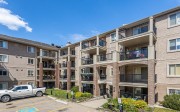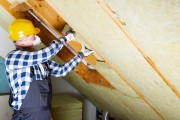Retrofitting Alberta’s buildings is about more than swapping out old equipment or lowering utility bills. Done right, retrofits can make homes more affordable, improve health and safety, and create high-quality jobs to boost local economic development. More than 70% of the buildings we’ll be using in 2050 are already built, so retrofitting existing buildings is a critical step to strengthen Alberta’s homes and communities. With less than 1% of buildings retrofitted annually, it would take over a century to upgrade Alberta’s building stock — far too slow to seize this once-in-a-generation opportunity.
To understand what stands in the way of scaling retrofits in the province, we spoke with industry experts, building owners, and other stakeholders to learn from their experiences. Based on these conversations, we identified seven main barriers to retrofits in Alberta:
1. Complex permitting and regulatory delays
Even when financing and plans are in place, retrofits can be held up by a maze of permits, inspections and approvals from multiple agencies — including all orders of government and utilities — that don’t work together. Delays can push schedules back, increase costs, throw off construction schedules and cause contractors to move on to other projects.
2. Financing gaps
There’s financing out there for retrofits, but it’s not always the right fit for people who need it. Loan terms, eligibility requirements, and complicated procurement processes can be dealbreakers. On top of that, many building owners, and sometimes lenders, still see retrofits as a financial gamble. When financing is too restrictive or seen as uncertain, projects stall before they start.
3. Utility cost gaps
In other provinces, utility-led retrofit programs make a big difference by lowering upfront costs for the project and sharing in the long-term savings for all ratepayers. Alberta lacks legislation needed for utilities to be able offer customers this choice, which means building owners end up carrying more of the costs themselves. Without utility participation and incentives, many projects become financially out of reach, especially for owners managing tight operating budgets. For large property owners and managers, this often means taking their investment dollars elsewhere.
4. Market perception and risk
Some building owners and managers still see retrofits as expensive, disruptive, and risky — perceptions that persist even though many projects have proven the opposite — boosting occupant health and safety, cutting operating costs, and increasing building value. This lingering skepticism makes owners hesitant to invest, slowing the market’s ability to normalize retrofits as a standard part of building management.
5. Fragmented incentives
Retrofit programs are scattered, inconsistent, and often gone by the time an owner is ready to act. Program requirements and timelines rarely align with real-world project planning. Without predictable, easy-to-access incentives, many building owners can’t move projects forward and opportunities for upgrades are lost.
6. Workforce capacity
Skilled workers are in short supply to meet the pace and scale of retrofits that are needed in Alberta. Tradespeople, contractors, and project managers with retrofit experience are booked solid. This shortage leads to longer wait times, reduced project scopes, or compromises on what gets done.
7. Limited delivery pathways
Many building owners complete a building assessment or energy audit but struggle to take the next step towards implementation. Without a clear plan and the right team in place to deliver it, projects can lose momentum and drop down the priority list. This gap between planning and execution means valuable retrofit opportunities are delayed or abandoned entirely.
Overcoming systemic barriers
Retrofitting Alberta’s existing buildings isn’t just a nice-to-have. It’s one of the most practical ways to make homes and buildings safer, healthier, and more affordable to heat and cool. The barriers outlined here show why the pace of retrofits is still far too slow and what’s at stake if that doesn’t change: higher costs for owners, fewer local jobs and buildings that fall short of the needs of Albertans.
Later this year, we’ll share a report that highlights successful Alberta retrofits that have overcome these challenges, showcasing what’s possible when the right conditions come together. But to make these successes more than one-off achievements, we need to understand and address the systemic barriers holding most projects back. The report will explore how targeted policy, coordination and investment can turn today’s standout projects into tomorrow’s standard practice.
The Pembina Institute acknowledges the generous support of the Alberta Ecotrust Foundation.







